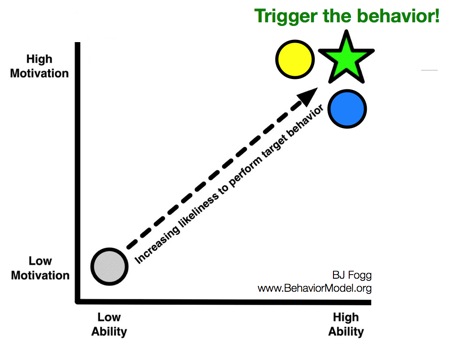Mosse, my colleague at work, sent me a link to this interesting discussion regarding the ability of facebook to be a successful persuasive technology with resulting behaviour change. We are both interested in how the combination of ubiquitous technologies, social media and service design can be combined to nudge behaviour, particularly in public services such as health.
The discussion suggests that facebook has the potential to become an important behaviour changer, but that it falls down on one major element – its ability to trigger action from the user. To support the argument, the blog links to the fantastic work of BJ Fogg (link). BJ, has been working in the area of persuasive technology for at least 15 years, and has published well and widely. He also has a nice open approach to sharing his work. He has created a model for behaviour change (link) that has three major elements:
1. Motivation
2. Ability/Simplicity
3. Triggers
Using the model by Fogg, the blog shows that Facebook has weaknesses when it comes to making the applications simple enough to make the transition to trigger activity. In addition, they claim that Facebook does not have the ability to create relevant triggers that are timely. In other words, Facebook has problems with both the ability axis, and the triggers.
This is an interesting analysis, and one that makes me think that maybe the iphone app model is better suited. Not only is the interaction design pleasurable (something not in BJs model), but it has the ability to create more context sensitive triggers. Maybe the ipod app solution fits the bill better.
p.s. BJ Fogg has also some interesting views on what he terms Mass Interpersonal Persuasion (MIP) here.
